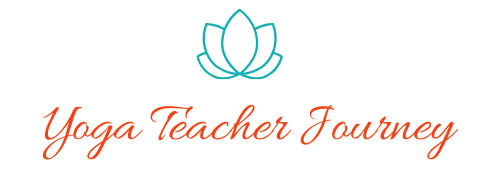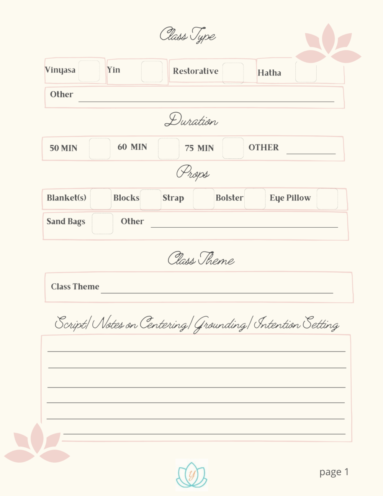Are you familiar with slow flow yoga? Slow flow is a vinyasa flow practiced at a slower pace with longer held postures, essentially providing time and space for the student to fully experience the postures in their body.
A slow flow sequence omits the traditional vinyasa transition (Chaturanga, Urdva Mukha Svanasana, Adho Mukha Svanasana) and steers clear of particularly challenging postures. It may allow more time for Pranayama, meditation, and include Yin and/or Restorative type postures.
The words “intentional,” “meditative,” and “restorative” have been used to describe slow flow classes. Ekhart Yoga says ”slow flow classes can help you find the space between poses while still retaining the gentle rhythm of a flow yoga class.”
As this Yoga International article explains “our yoga practice should have moments in which we can stop and feel what we are feeling. Like conversations, yoga practices should have quiet, thoughtful pauses during which we can consider and reconsider.”
With all that said, teachers certainly have the freedom to build their slow flow sequence to suit their students’ needs. If you’d like to include slower, modified vinyasas in your sequence, then include them. If your students like a challenge every now and then, throw in a balancing Ardha Chandrasana (Half Moon pose) – cueing for modifications of course.
HOW SLOW CAN YOU GO?
During a slow flow class not only do we include longer holds in postures, but transitions are practiced at a slower pace as well (see below for more detail on transitions). All movements are made mindfully with intention and with a balance of Sthira and Sukha (steadiness and ease).
Slow flow tends to spend more time during grounding and centering, Pranayama, meditation, the warm-up and the cool-down portions of class, than we would in a vinyasa sequence.
This leaves a narrower time frame for standing and balancing postures than in your typical flow class. So, when designing your sequence, keep in mind that the slower you go the fewer postures you will cover during class.
LONGER HOLDS
Traditional vinyasa postures are intended to be held for 3-5 breaths. Slow flow postures can be held for 5-10 breaths. Have you held Virabhadrasana II (Warrior II) for 10 breaths?!
Slower does not always mean easier. So again, modify the postures, pace, and transitions to meet your students where they are. Side Note: There is nothing wrong with a little challenge!
It would not make sense in your flow to hold every single posture for 5-10 breaths. Nor would you have time to include all you need to in a well-rounded class if you followed that pattern. Instead, choose the postures that make the most sense to hold for longer periods.
You may choose to build up to holding the standing and balancing postures longer. These longer held postures allow the student to explore the posture more profoundly in their body. The sensations will most likely change as more time passes allowing them to engage different muscles as they adjust. They may become more aware of their breath and how it assists them throughout the duration of the hold.
Similarly, it may make sense to choose long holds for your cool-down period, leading into Savasana.

YIN AND RESTORATIVE POSTURES
Blankets, blocks, and bolsters are our friends in a slow flow class. You may choose to begin class in a Restorative posture such as reclined Salamba Baddha Konasana (Supported Bound Angle Pose) or Salamba Matsyasana (Supported Fish Posture).
Be sure to make use of the bolster (and blocks and blankets) during the cool-down for Restorative backbends, seated and reclined twists, and forward folds. Offer a variety of suggested uses of props in Savasana. These postures are each held for about 10 breaths.
Yin is also considered a slow, meditative practice so it’s no surprise it may complement your warm-up or cool-down. Since Yin postures are typically held for 3-5 minutes, you’ll probably want to shorten the holds to a minute or so.
TRANSITIONS
There are many alternatives to the traditional vinyasa transition from one side to the other during slow flow.
You can even include Surya Namaskar A (Sun Salutation A) in your sequence and modify the vinyasa portion. Once you arrive at standing, consider beginning with Ardha Surya Namaskar (Half Sun Salutation) then, if appropriate, proceed to a modified Surya Namaskar A.
Here are some alternative transitions in Modified Surya Namaskar A:
Instead of stepping back to plank (as in a typical vinyasa)
- a) step directly back to Adho Mukha Svanasana (Downward Facing Dog) or
- b) step back to plank and drop knees (a modified plank version of a Vinyasa) or
- c) step one foot back and lower the knee to come to Anjanyasana (Low Lunge).
Options from the Down Dog:
- a) slowly step forward to the top of the mat to come to Ardha Uttanasana (Half Forward Fold), Uttanasana (Forward Fold), then rise to Tadasana (Mountain Pose)
- b) three-legged dog, step one foot forward and lower the opposite knee to Anjanyasana
- c) lower both knees to modified plank, lower down, press up to cobra and back to Down Dog (essentially a modified version of a Vinyasa) then continue as in a).
Options from:
Anjanyasana (Low Lunge)
- Continue with other postures such as a Lizard Lunge, Half Split, Easy Twist, etc., then step weight back into the forward foot, and step the back foot forward to meet it coming to Ardha Uttanasana (Half Forward Fold).
From Tadasana (Mountain Pose)
- Step one foot back to a High Crescent Lunge or Virabhadrasana I (Warrior I) continuing your flow into other standing and balancing postures.
- From a forward-facing, neutral hip posture, heel/toe the front foot to the center of the mat before turning the hips to the side and aligning the front heel with the back arch for Virabhadrasana II, and other externally rotated postures such as Utthita Parsva Konasana (Extended Side Angle), Utthita Trikonasana (Extended Triangle), etc.
PRACTICE YOUR FLOW
All of this may sound well and good but the best advice you’ll receive is from your own body. Practice your sequence and the transitions described above. You may find other variations that work better for you. Practice the timing, the holds in various postures and teach from your heart.
Practicing your own slow flow is the best way to connect to your authentic teacher self. If you’d like some more direction, try the following videos:





